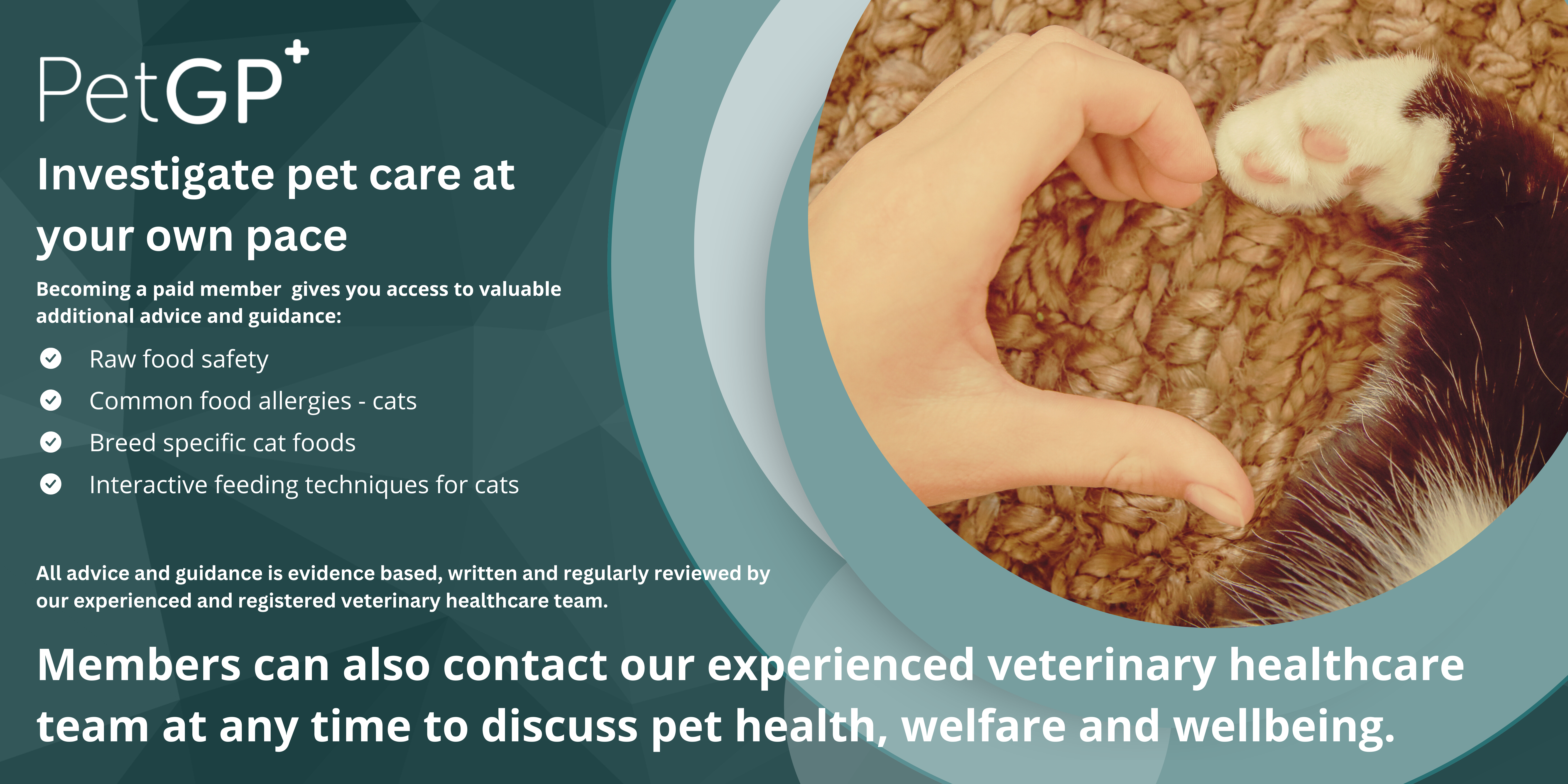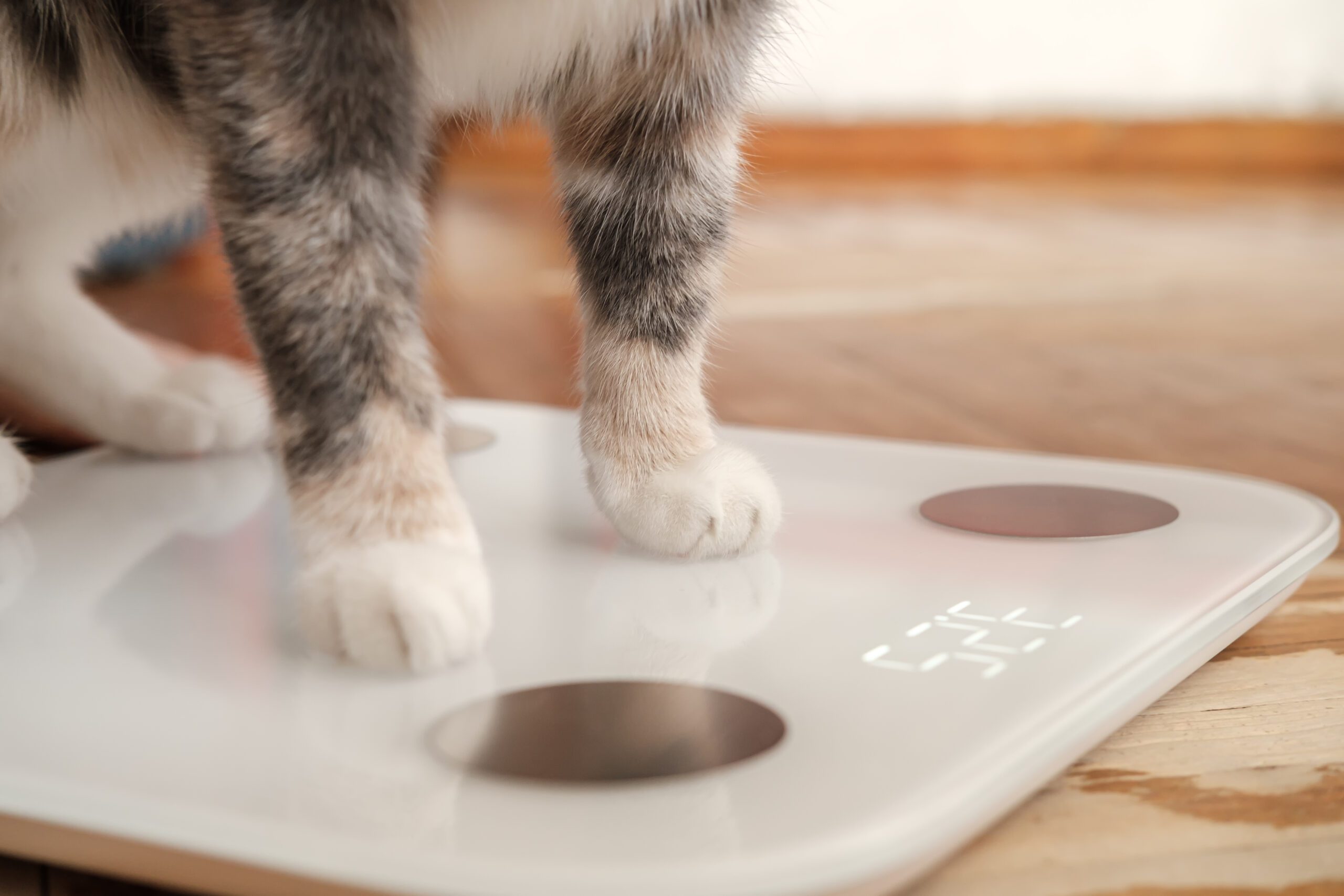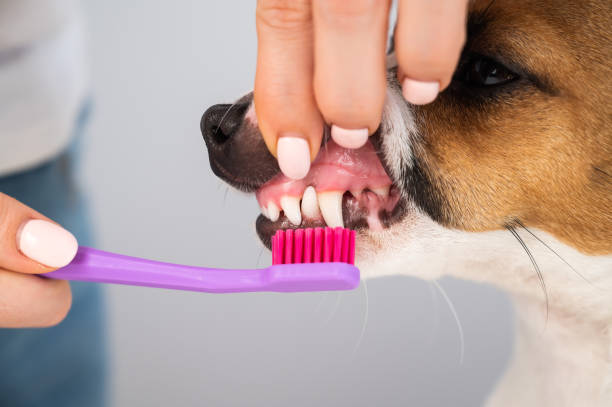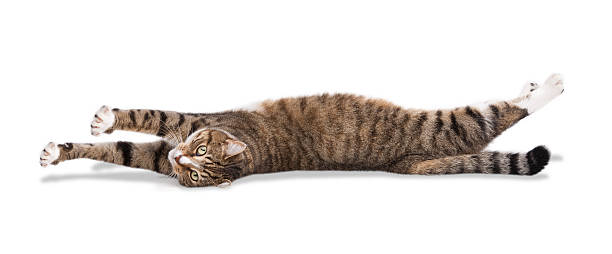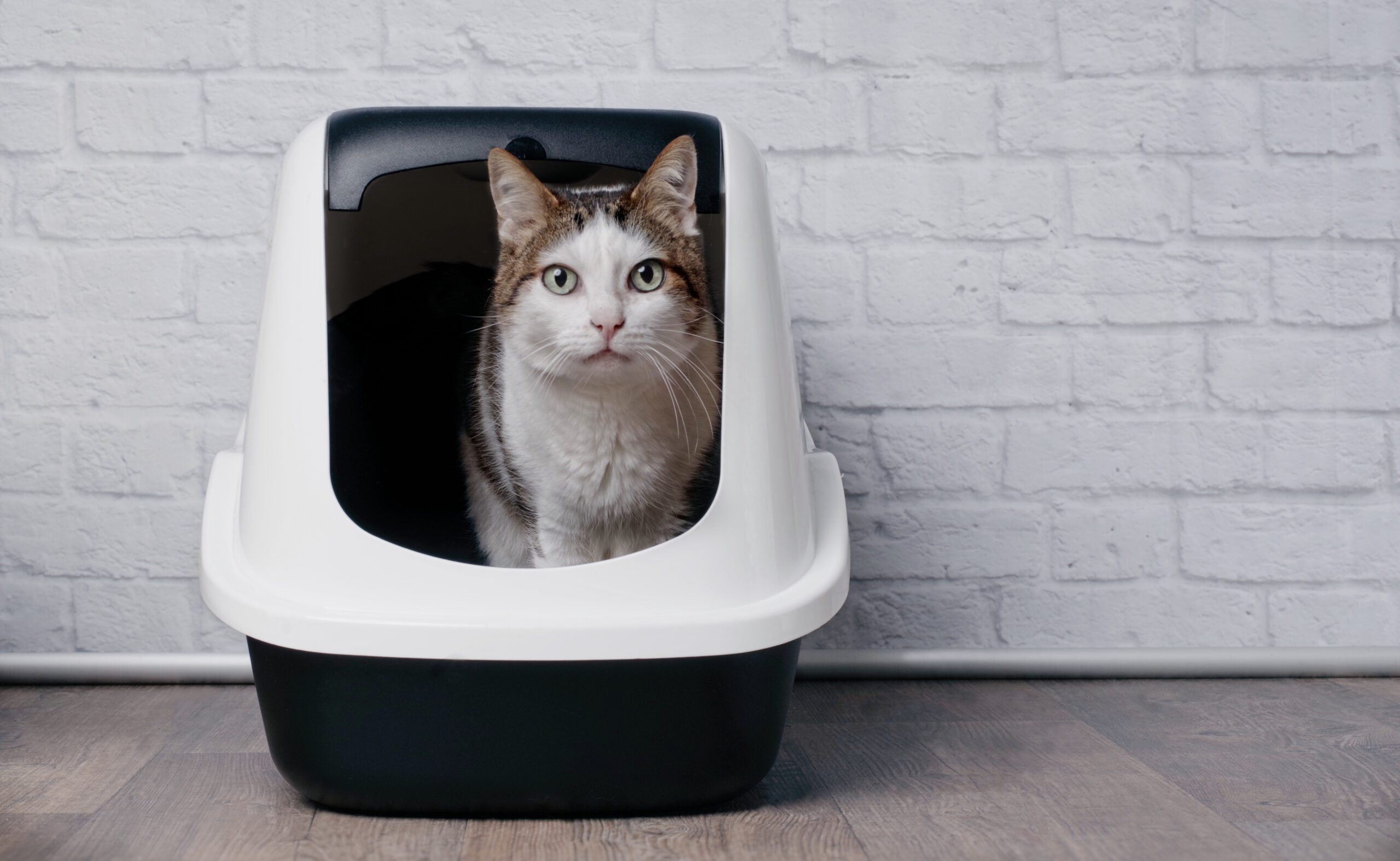What food should my cat eat?
There are many types and manufacturers of cat food, which can make choosing the right food difficult. We all want to do the best we can for our cats to keep them healthy.
It is important to remember there is not one best food to feed. The food chosen needs to suit the individual pet as well as the resources and lifestyle of the cat and owner. A basic cat food will provide adequate nutrition for your cat. However, a more premium one may be more nutritious or more tailored to the needs of your cat's breed or life stage.
As an owner it is important to consider options carefully and choose one that is right for you and your cat. It can be difficult to find evidence-based information online, but your veterinarian or our veterinary team will be happy to help.
History of pet food
Domestic cats come from Middle Eastern wildcats (Felis sylvestris). This evolution began up to 12,000 years ago. Cats survived as hunters. They ate what they caught. This was usually small birds and rodents. As they became domesticated commercial cat foods were not yet available and they were fed food scraps from the table of their new keepers. This encouraged them to stay close to humans and they helped to control pests in return.
When civilisation changed and humans stopped growing and storing their own food as they once had commercial cat foods started to become available. One of the first recorded guides to pet feeding was developed in the 14th century by the eleventh Count of Foix Count in Southwestern France. He was an avid hunter and described the care he provided for his beloved greyhounds. In summary the book describes them being fed bran bread, meat from the hunt, and if the dog was sick, goat’s milk, bean broth, chopped meat or buttered eggs.
In the Middle Ages pets were generally still fed the same or very similar diets to their owners. Little consideration was given to their nutritional requirements, and they ate what owners could spare. In approximately 1860 a businessman called James Spratt is said to have introduced the first commercially prepared pet food in England. This was the first type of dog biscuit or kibble. It was loosely based on “ship biscuits”. These biscuits contained a mix of wheat meal, beef blood and vegetables.
When was modern day cat food invented?
Veterinary nutrition emerged as a science in the late 1800’s and it has continued to evolve ever since. We now know more than ever before about our cats’ nutritional requirements, but as we discover more, things will continue to change within the pet food market.
For example, commercial cat food has been available since the 1950’s, but balanced nutrition in cat foods was not however achieved until the 1970’s. Since that time, more research has been done to give us a greater understanding of a cat’s exact nutritional requirements. This has allowed the development of breed and life-stage specific foods.
Why do we need commercially produced cat foods?
Cats are obligate carnivores; this means that they rely on specific nutrients found only in meat to survive. They are not able to make these nutrients themselves in the same way humans and dogs can.
Most cat owners feed their cats either dry kibble or wet food, or a combination of the two. Both types of food are processed and may seem less appealing to us as humans. However, commercially prepared cat foods have been developed after years of research into cat’s nutritional needs. They give your cat the correct balance of nutrients and calories to support good health. This can be exceedingly difficult to achieve with a diet made at home.
How is it made?
The production method of pet foods is very much dependent on the form being produced. Food is available as kibble, tinned wet food and trays or pouches of wet food. The method of production and the type produced.
Dry pet foods are produced when the ingredients are mixed to form a dough. This dough is then extruded and baked to form the kibble.
Canned pet food are produced by blending meat and other dry ingredients with water. This mixture can be blended to a paste or left “chunky”. Once combined it is sealed into cans. These are then heated to cook the ingredients and sterilise and seal the contents.
Where do I source it?
Cat food is now widely available, in pet shops, supermarkets and online. Some owners are happy to buy food weekly like they do with their own groceries. Others may require greater quantities and choose to have this delivered from a larger retailer. Many retailers now allow easy repeat ordering, so the food arrives on time without the owner needing to remember to place the order each time. This offers the highest level of convenience for some. Wherever you decide to buy from, it is important to consider food storage, to ensure that the food remains safe and free from pests.
What should I feed?
The best food to feed your cat is one that completely meets its nutritional needs. Most commercial cat foods are formulated to meet a cat’s basic needs. However, some are more tailored and specific to life stages or breed requirements. All cats are individual and may have different requirements or preferences, just like us humans. Some foods will be better suited to one cat than another.
Each manufacturer of commercial cat food will have a slightly different recipe. Commercial cat foods are highly regulated and have undergone rigorous testing by veterinary specialists, to ensure they are safe and nutritionally balanced. More expensive foods may include higher quality ingredients, or a more finely tuned mix of nutrients, but all cat foods are adequate to meet a cat’s basic nutritional needs.
The difference is similar to the difference between own brand and premium brand foods for us. All can be nutritious, but some are more palatable and made with higher quality ingredients.
Life Stage Nutrition
Cat’s nutritional requirements change as they age. For example, Kittens need higher levels of protein and more calories as they grow. Senior pets need less calories and can benefit from reduced salt and more easily digestible proteins within their diet. These are accounted for in life-stage nutrition. If possible, your cat should be fed the appropriate diet for its current life stage
Breed Specific Nutrition
Some breeds are more likely to develop particular health conditions. For example, some may be more likely to become obese or have joint problems. Others maybe more likely to have genetic conditions, like diabetes. Breed specific diets have been designed to have the right balance of nutrients to help reduce the risks of these problems occurring.
Fashionable foods
There are many different unusual and fashionable pet foods available, including RAW, vegetarian, vegan, or insect-based diets. Each have advantages and disadvantages. Ensuring a diet is going to be correctly balanced before you feed it is very important. It can be incredibly challenging to make a nutritionally balanced diet at home. This is difficult even if you are following a recipe. A great diet becomes a terrible idea if you are unable to balance your cats’ nutritional requirements correctly. Try not to be swayed by popular opinion and instead make evidence-based choices. Your veterinary healthcare team will be happy to talk to you about the pros and cons of each diet to help you with this process. You can also discuss this with our veterinary healthcare team.
Weight assessment
Keeping an eye on your cat's weight is essential for maintaining health. Overweight cats have been shown to have shortened lives and be much more likely to suffer from ill health. Pets that are 15% over their ideal weight can have their lifespan shortened by up to 2 years. In cat’s, obesity is linked with diabetes, breathing problems and arthritis. This can reduce not only their quality of life but also yours as an owner.
Cats come in all shapes and sizes. Body Condition Scoring is a quick and effective way to assess if your pet has the right amount of muscle and fat, whatever their body size. Body Condition Scoring is based on how easy it is to feel their ribs and spine. You can easily do this at home with your pet – it’s just like having a hug with some extra checks thrown in! Why not contact one of our veterinary healthcare team so they can explain how to assess this at home?
Supplements
Supplements can be incredibly useful to support nutrition if they are used correctly. Unfortunately, many are not proven to make any difference at all, and some can cause harm to your pet. It is important to ensure any supplements you use have evidence to prove their claim. Natural or herbal does not necessarily mean safe or effective. Always discuss supplements you plan to give with your vet so they can ensure they are appropriate and not likely to interfere with any current medication, just as you would do for yourself!
Summary
There are many types and manufacturers of cat food. This can make choosing the right food very difficult. We all want to do the best we can for our cats to keep them healthy.
It is important to remember there is not best food to feed. The food chosen needs to suit the individual pet as well as the resources and lifestyle of the cat and owner. A basic cat food will provide adequate nutrition for your cat. A more premium one will possibly be more nutritious or more tailored to the needs of your cats breed or life stage.
As an owner it is important to consider options carefully and choose one you feel is right for you and your cat. Try not to be swayed by current trends and opinions. Research and use evidence to make your decisions to avoid pitfalls later.
